This is the second year in a row we’ve been visited by a pair of Scarlet Tanagers. Yay!
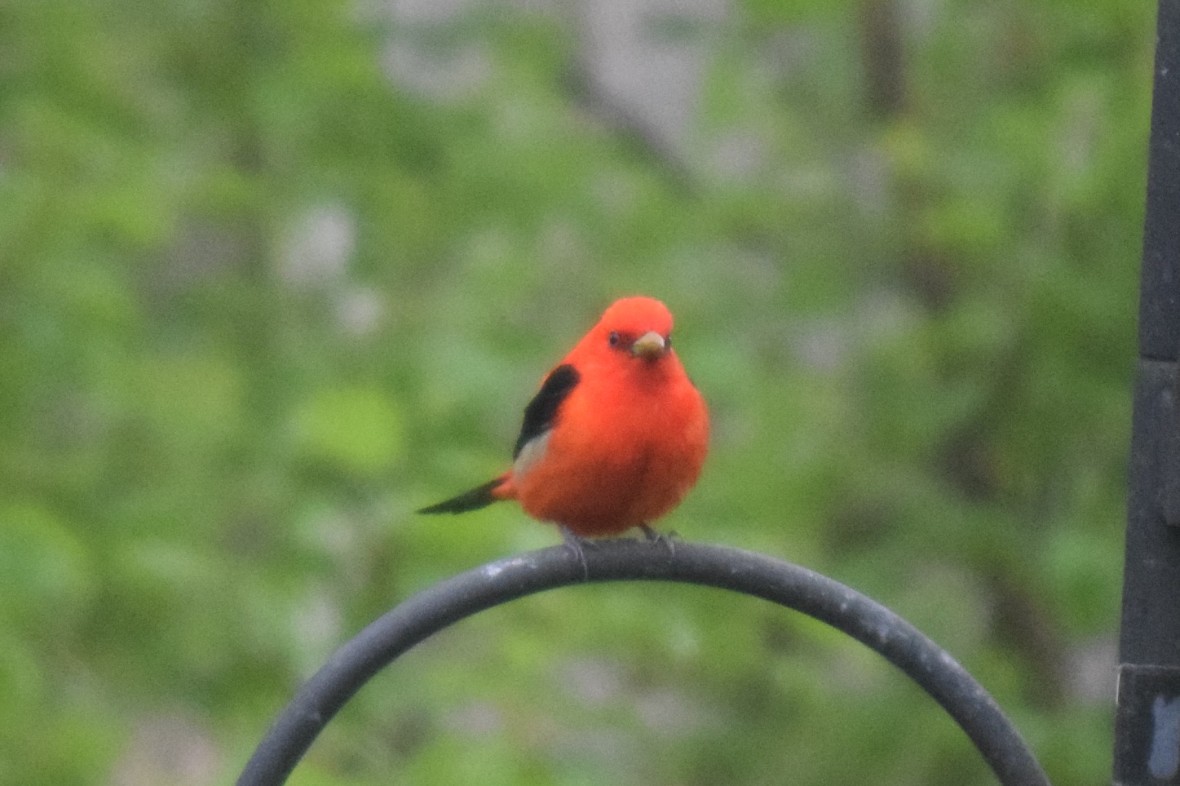
These birds are so brightly colored that they could be part of a neon sign. They look like they should spend their lives in a tropical jungle. Instead, they spend winters in places like Colombia and Ecuador and their summers in eastern North America.
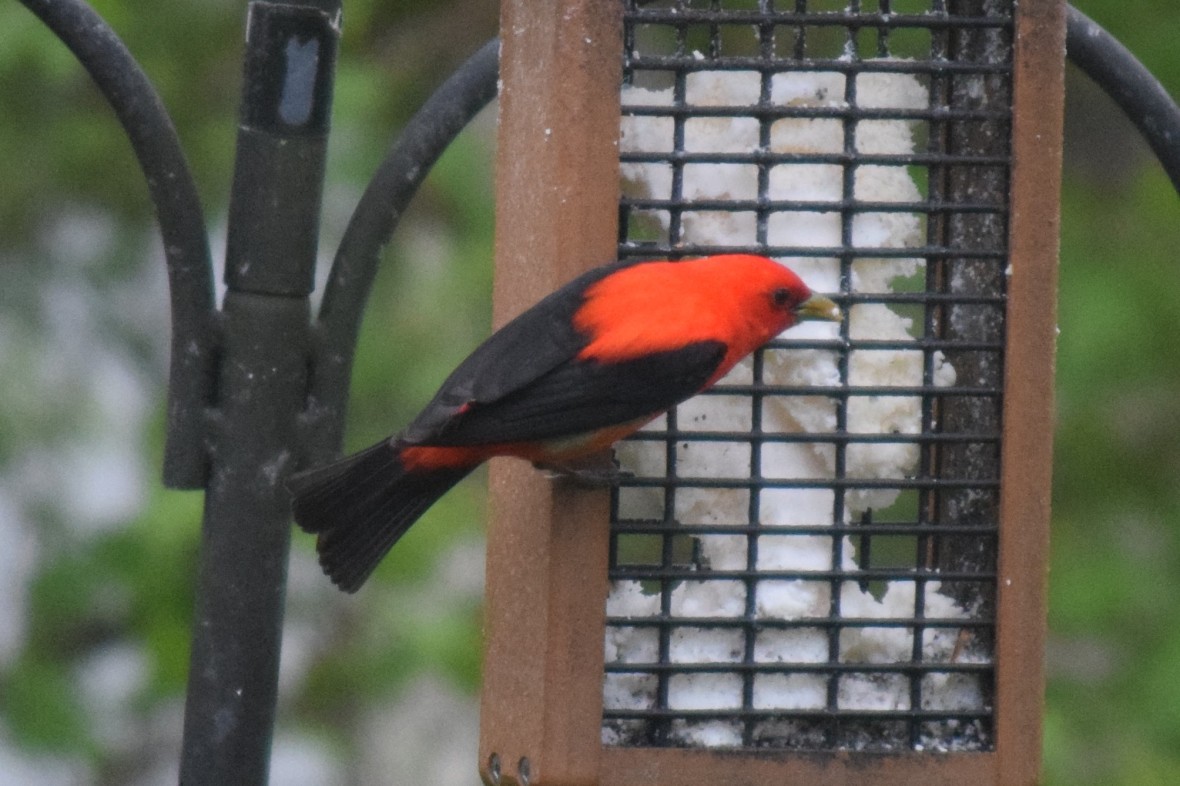
They live mostly in the tree tops, where they like to eat insects. They’re also fond of fruit, which will attract them to lower elevations on occasion.
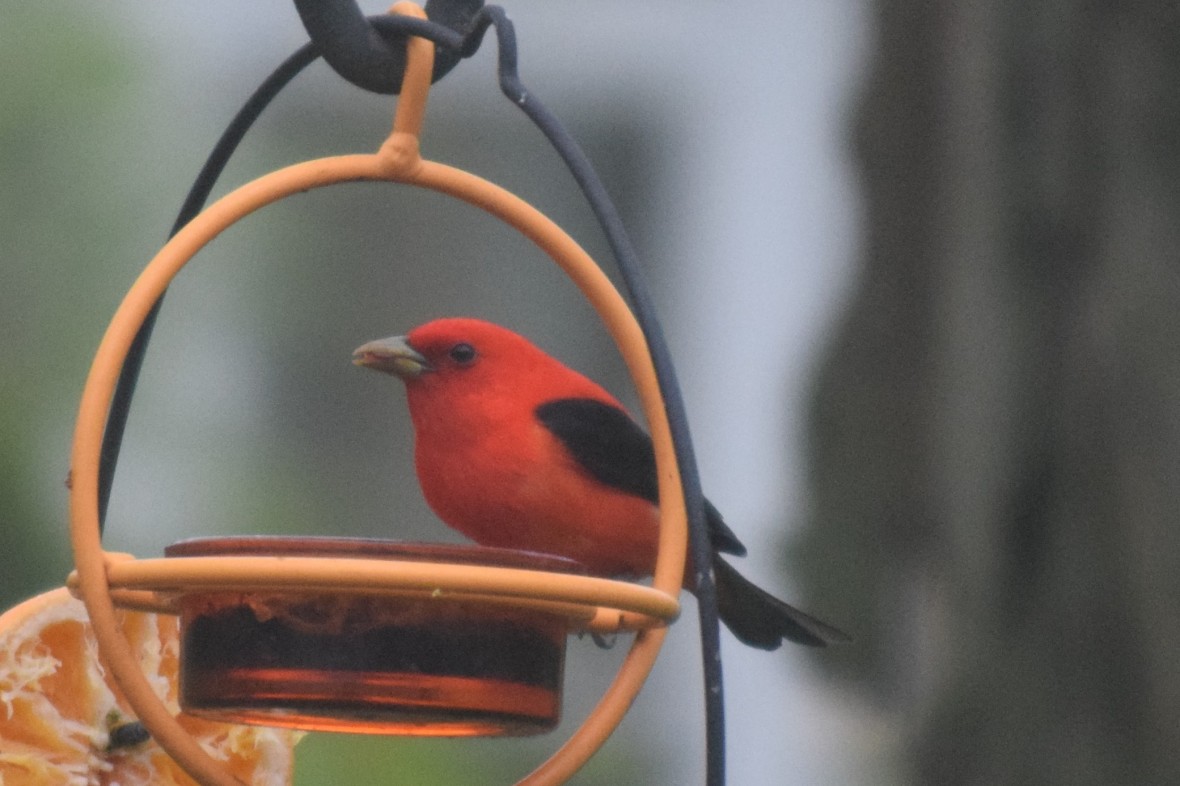
In terms of feeders, that means they will go for suet, grape jelly, and oranges. They are also attracted to berries and small fruits of many kinds. Think Serviceberries, Elderberries, Currants, Blackberries, etc.

Regarding size, Scarlet Tanagers are bigger than a Sparrow but smaller than a Robin.
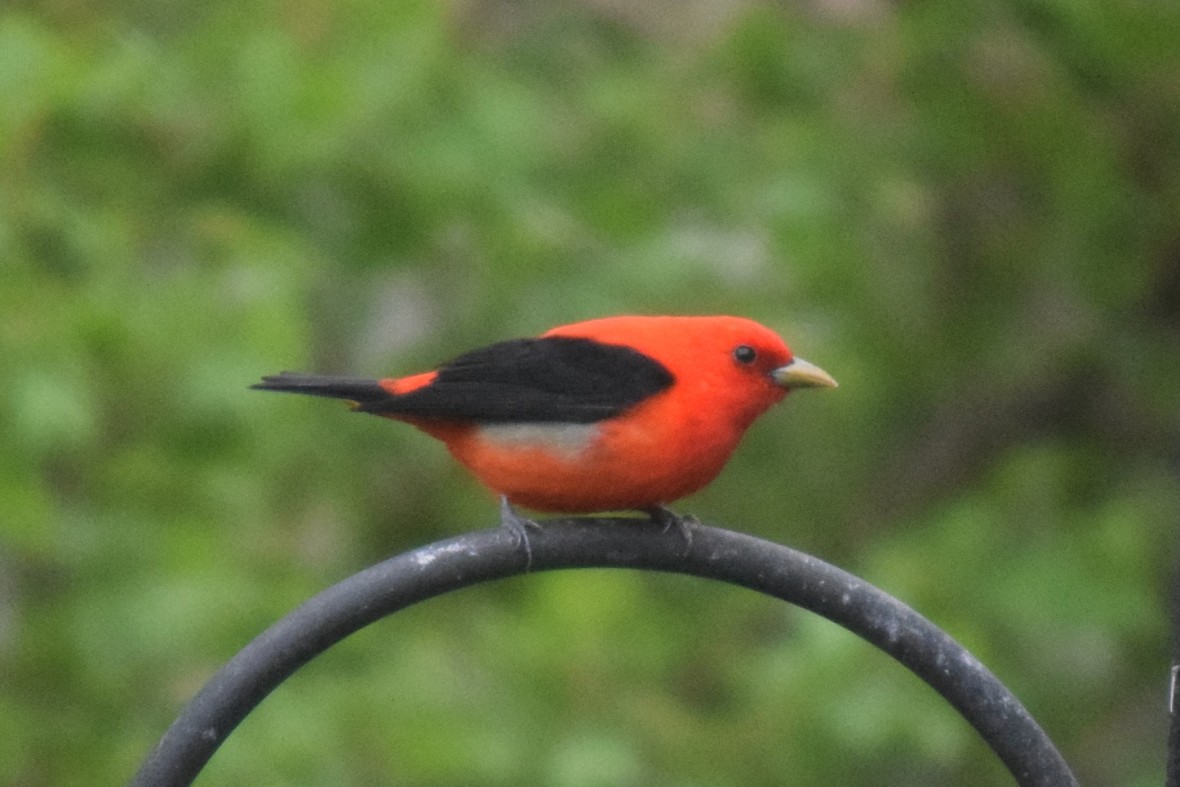
These are the male’s summer colors. After breeding season, they let themselves go rather drab.

Scarlet Tanager sitting on a wire.
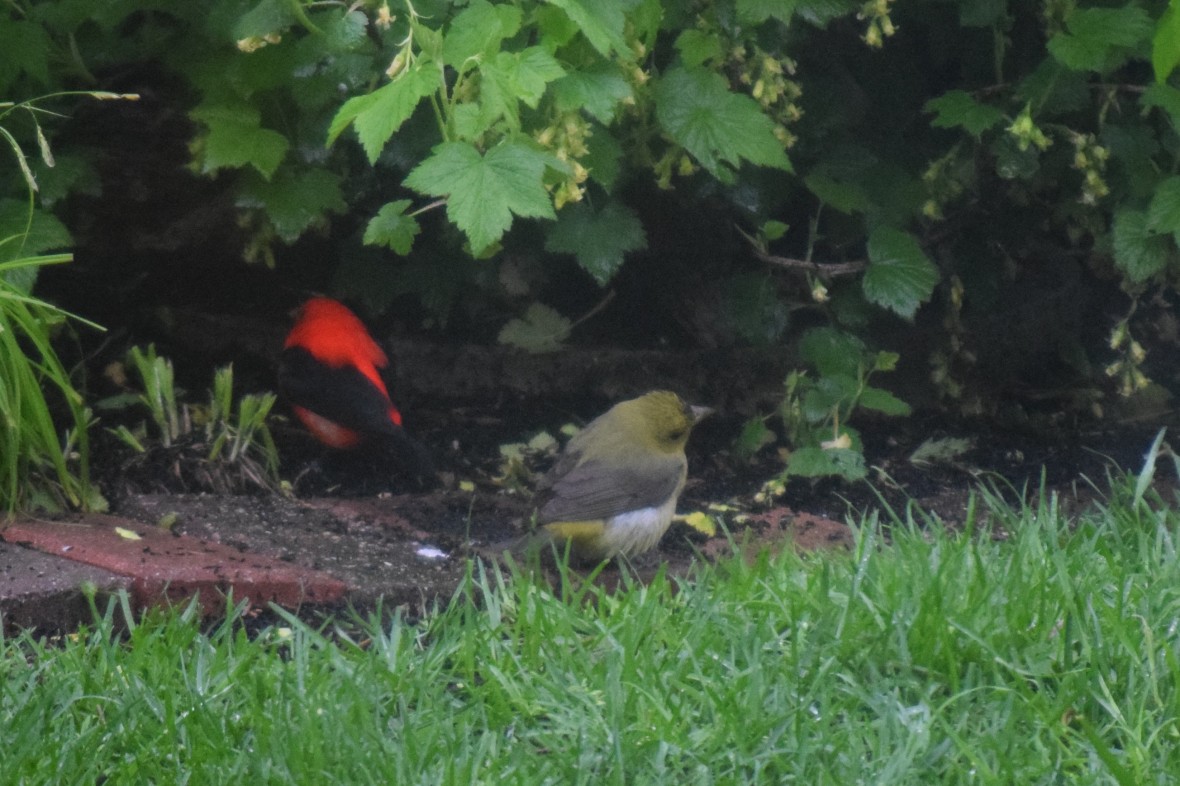
Judy caught the male and female together in this picture. The female is mostly greenish-yellow. Last year we saw the Scarlet Tanager for just a single day. This year we’ve seen them 2 days in a row so far. Wouldn’t it be cool if they nested nearby and visited regularly over the summer?
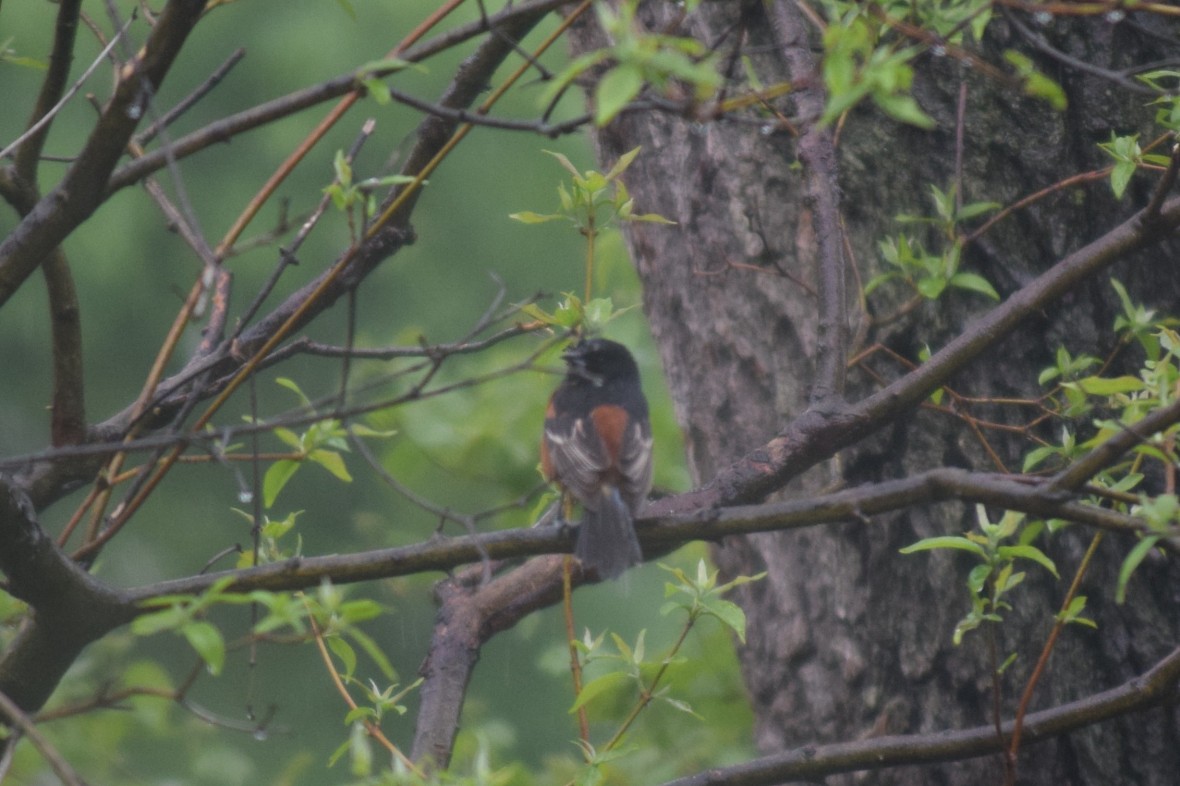
Oh, and remember how I said we had Orchard Orioles visiting this year for the first time? Judy managed to get a picture of this one. They are smaller and darker than their Baltimore cousins.
Have you seen Scarlet Tanagers in your garden?

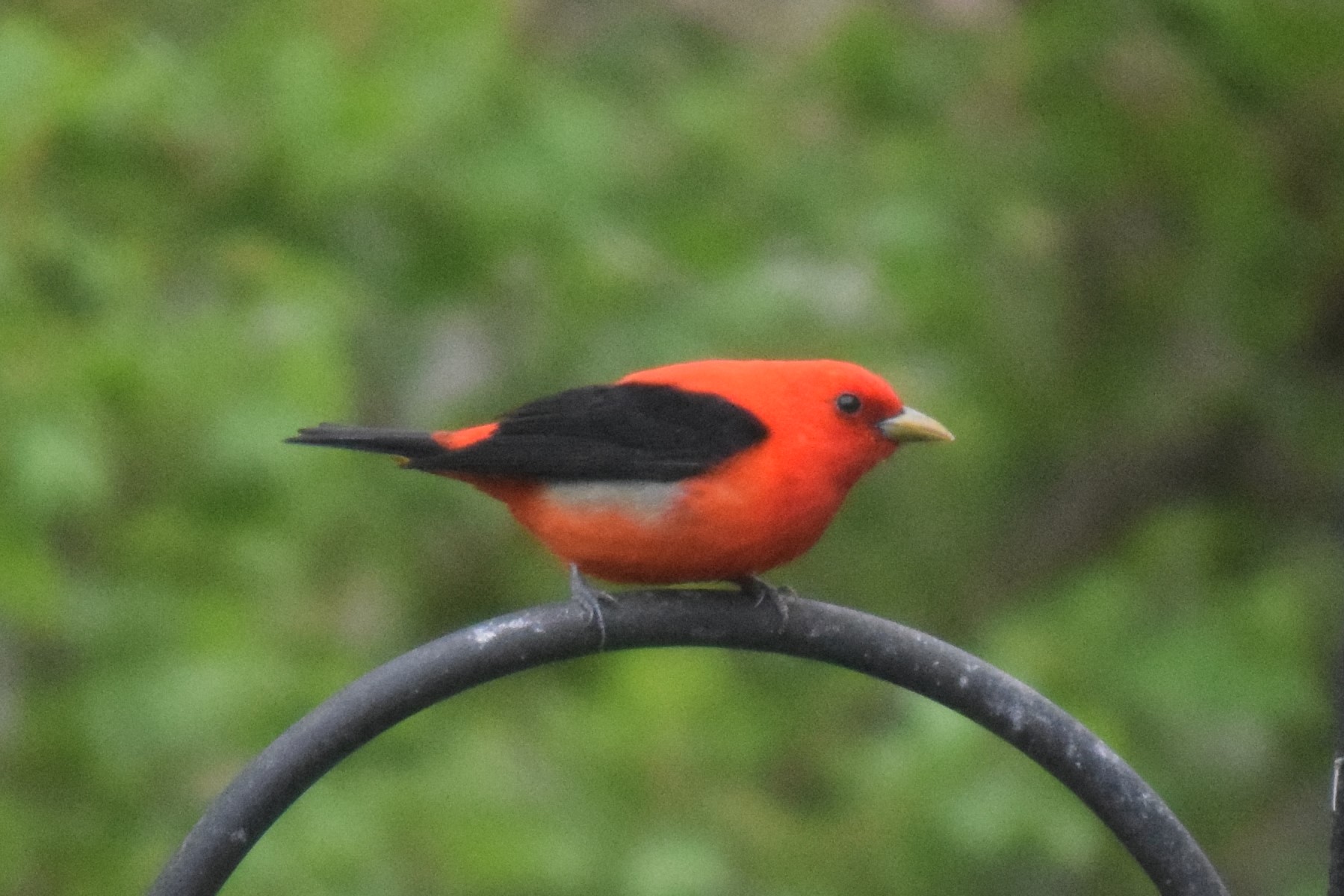




No, never have I seen one. This is very cool!
Fingers crossed for you! What a beautiful bird.
For sure!
Maybe you will. Their breeding range runs all up the east coast north of Virginia.
I’ve never seen one. At this point, my sightings of beautiful migrants consists of one Indigo Bunting and one Baltimore Oriole. On the other hand, if you want seabirds and wading birds and ducks and such, I can offer them up.
The Tanagers are beautiful, although I was surprised by the colors of the female. I guess I would have expected her to be a more drab version of the male, instead of being differently colored.
A lot of female birds are very different in coloration from the males. I find it very confusing. Unfair to amateur birders!
Your seabirds are fantastic.
Oh, what glorious shots and aren’t you two the lucky ones to have this visitor. I’m jealous!
Thank you! We were pretty excited.
Stunning birds and no, we don’t have them over this side of the Atlantic!
That’s too bad!
What beautiful birds, your garden must be multicoloured with your lovely orange tulips, and all the spring flowers, and now a Scarlet Tanager…I hope they stay a while.
Me too. Haven’t seen them today.
I think this is so exciting. I have only seen them in our garden twice ever. How exciting it would be to have them nest nearby. I have never seen them at feeders. Good pictures Judy!
I suspect we would not see them if it weren’t for the feeders.
Lovely birds. They certainly are colorful. Have never seen them here in Arkansas. Hope they do stick around in your area so you can enjoy them. Love birds and get very excited when I see one that is new to our area.
Backyard bird watching can be very exciting, for sure. Though the fact I get so excited makes me think I must be getting old.
Don’t think getting excited has to do with just getting older. Ha Ha
How fortunate you are to see all these bright beauties! I’ve never had the pleasure of seeing any of these birds. Hope the scarlets stick around for you.
Me too! Haven’t seen them for a couple of days.
Great pictures. We’ve seen a pair in our garden only once and long ago but there are reports of sightings in my area. Enjoy.
Hope they drop by your garden again.
Beautiful! I think your native plantings draw all these migrants in. Enjoy this special time of year.
This is one thing that is easy to enjoy, even with everything else that is going on.
We occasionally see a scarlet tanager around, but not as a regular visitor. We do have daily visits lately from pairs of rose breasted grosbeaks, Baltimore orioles (who gratify me by actually eating the oranges I leave for them!), and indigo buntings. Tons of finches, mourning doves, blue jays, and titmice, too. How nice that you were able to get pictures!
Haven’t seen any indigo buntings this year. Also far fewer grosbeaks than normal.
I’m colorblind so I doubt I’d ever see one outside against leaves, but I loved seeing them here. They’re very pretty birds!
Yes!
Great photos! I like the female too. Amelia
We were excited when we saw them.
I just read a post from an expert birder that the reason so many of us are seeing so many insectivorous birds at feeders this year is because they are starving! The cold wet spring has been bad for insects and the migrants are having to stop on their way to nesting grounds up north. We are lucky to see them but the reason is depressing. Keep up the feeding and enjoy themwhile we can.
Well, that’s distressing to hear. The weather has gotten a lot warmer lately so I hope that improves the situation.
I’ve never seen one so thanks for sharing. 🙂
You’re welcome!
Nothing that colourful here Jason. Amazing difference between male and female. Great photos too!
Yes, the male and female have unusually distinct coloring.
What a gorgeous creature! Lucky you, and many happy returns.
Thanks! We do feel lucky!
So lovely! I have not seen any in our garden, but I did (coincidentally) happen to put out some oranges in a suet feeder this morning – fingers crossed!
A number of birds enjoy oranges, including Baltimore Orioles and Woodpeckers.
What an amazing colour, At home in the U.K, I have a bird bath outside our kitchen window, where I really enjoy spend time just watching our garden birds. Nothing quite as colourful as this though. Thankyou for the images .
Bird baths provide a lot of entertainment.
Gorgeous! I’ve never seen one before.
Saw one for the first time just last year.
Love the couple! Wouldn’t it be great if they nested in your garden?xxx
That would be great.
Wow, Jason, they do look exotic! I hope they do end up nesting in or around your garden so they can easily keep coming back for all the food, insects and grape jelly you and your garden provides.
Haven’t seen them since this post, sad to say.